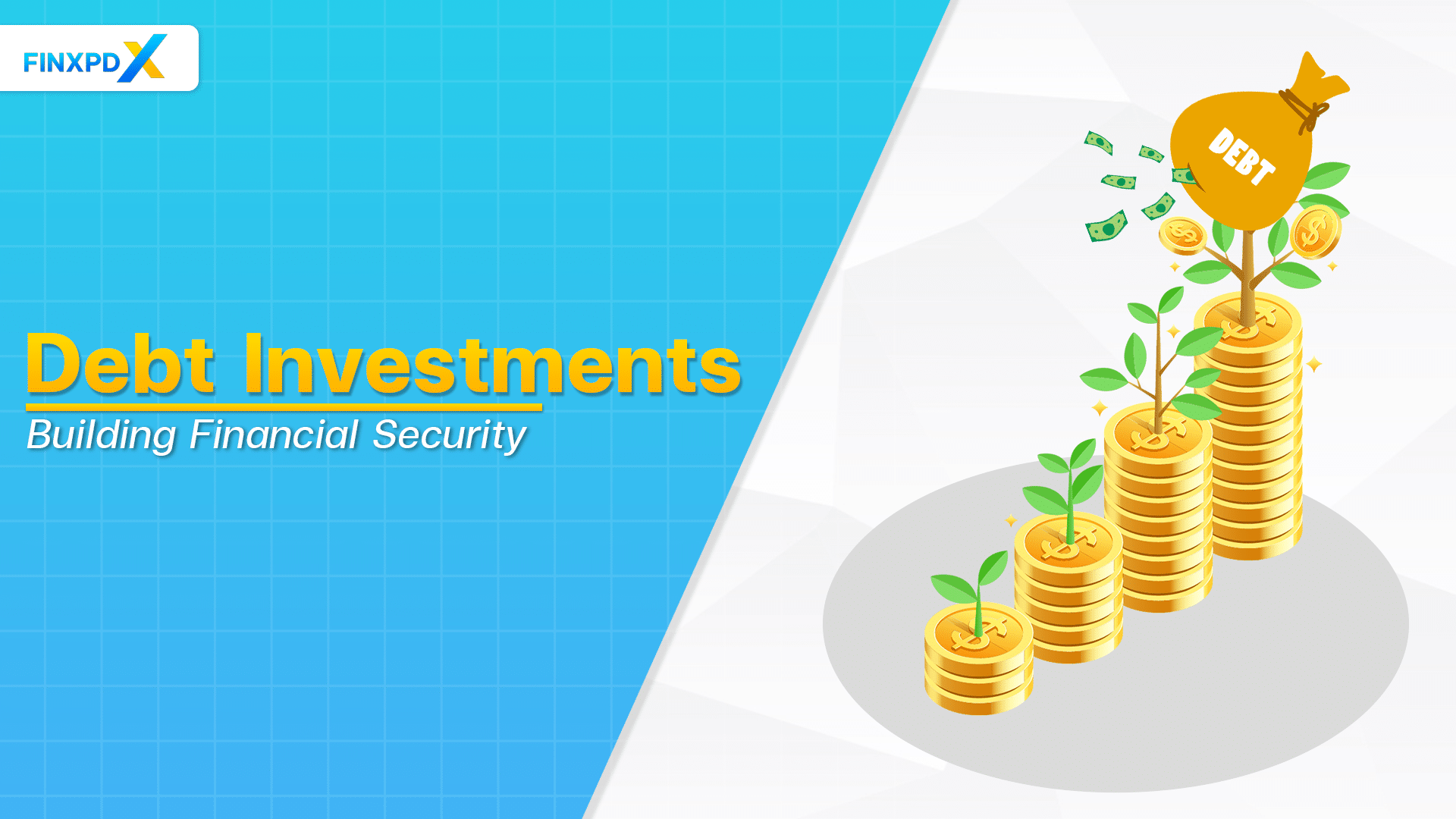Debt investments are an important part of the world of finance. They might not be as well-known as stocks, but they play a big role in how people invest their money. These investments are a way for investors to lend money and then get it back with interest.
This article is all about understanding what debt investments are, the different types you can find, and why they can be good to have in your investment mix.
What Are Debt Investments?
Debt investments represent a method where individuals or institutions lend money to entities such as governments or corporations, with an agreement that the borrowed sum will be returned by a specified date, along with periodic interest payments. This form of investment is similar to extending a loan, where the investor acts as the lender. The interest received serves as the profit or return on the investment.
Various forms of debt investments exist, including government bonds, corporate bonds, and municipal bonds, each possessing unique characteristics. For instance, in a government bond, the investor’s money is loaned to the government for public projects, with an assurance of repayment plus interest. Corporate bonds follow a similar principle, but the funds are lent to companies.
Key Takeaways
- Debt investments involve lending money to an entity, such as a government or corporation, in exchange for fixed interest payments and the return of principal at maturity.
- Types of debt investment include government bonds, corporate bonds, municipal bonds, Treasury securities, savings bonds, certificates of deposit (CDs), and commercial paper.
- Debt investments are generally safer, offering fixed returns, whereas equity investments have higher risk and return potential but come with voting rights and potential dividends.
7 Types of Debt Investments
Debt investments are varied, each serving distinct purposes and catering to different investor needs. Here’s a breakdown of the major types:
1. Government Bonds
These securities are issued by governments. Their purpose is to finance governmental projects or manage cash flow. When investing in government bonds, you are lending money to the government. The government, in return, promises to pay back the principal amount on a set date. They also make periodic interest payments.
2. Corporate Bonds
Companies issue these bonds as a way to raise money. The funds might be used for things like expanding operations or paying off debts. By investing in corporate bonds, you are lending money to these companies. In return, you receive interest payments.
3. Municipal Bonds
State and local governments, or their agencies, issue these bonds. The funds raised are typically used for public projects, such as building schools or highways. A key feature of municipal bonds is their tax advantages. The interest income is often exempt from federal taxes, and sometimes from state taxes.
4. Treasury Bonds and Securities
These are issued by the U.S. Treasury and are among the safest debt investments. They are backed by the full faith and credit of the U.S. government. The category includes Treasury bills (short-term), Treasury notes (medium-term), and Treasury bonds (long-term).
5. Savings Bonds
The government also issues these bonds. They offer a fixed interest rate over a specified period. Savings bonds are low-risk. They are commonly used for long-term saving goals, like funding education or retirement plans.
6. Certificates of Deposit (CDs)
Banks and credit unions offer CDs. They are time-bound deposits that provide a fixed interest rate. In exchange, you agree to keep your money deposited for a set period. Withdrawing money early from a CD usually results in a penalty.
7. Commercial Paper
This short-term debt instrument is issued by large corporations. It is used to meet immediate funding needs. Commercial paper typically matures in less than a year. It is mainly used by companies with high credit ratings.
The 5 Benefits of Investing in Debt
Debt investments offer several key advantages, making them an essential part of many investment portfolios. Here are the top 5 benefits:
1. Predictable Income
The fixed interest payments from debt investments provide a steady and predictable income stream, which is particularly valuable for those who require regular income, such as retirees.
2. Lower Risk
Debt investments typically have lower risk compared to stocks. They offer more security as they are bound by the promise of returning the principal and paying regular interest.
3. Diversification
Including debt investments in a portfolio helps balance out the risks associated with other types of investments, like equities, thus creating a more stable investment strategy.
4. Tax Benefits
Some debt investments, especially municipal bonds, come with tax advantages, such as exempting interest income from federal and sometimes state taxes.
5. Capital Preservation
For investors focused on preserving their capital while earning some returns, debt investments are an attractive choice due to their lower volatility compared to stocks.
Risks Involved in Debt Investments
While debt investments are generally considered safer than equities, they are not without risks. Understanding these risks is crucial for making informed investment decisions. Here are the key risks involved:
1. Credit Risk
This is the risk that the issuer will default and be unable to pay back the principal or interest. It’s higher in corporate bonds, especially those from companies with lower credit ratings.
2. Interest Rate Risk
When interest rates rise, the value of existing bonds typically falls. This is because new bonds are likely to be issued at higher rates, making existing bonds with lower rates less attractive.
3. Reinvestment Risk
This occurs when bond proceeds must be reinvested at a lower interest rate than the original bond. It’s a concern when interest rates are declining.
4. Inflation Risk
Inflation can erode the purchasing power of the fixed interest payments from bonds. If inflation is higher than the interest rate earned, the real value of the investment declines.
5. Liquidity Risk
Some debt securities, especially those that are not widely traded, may be hard to sell quickly without incurring a significant loss in value.
Differences Between Debt Investments and Equity Investments
Understanding the differences between debt investments and equity investments is crucial for investors. Here’s a comparative table highlighting their key characteristics:
| Feature | Debt Investments | Equity Investments |
|---|---|---|
| Type of Investment | Lending money to an entity (loan) | Buying ownership in a company (stocks) |
| Risk Level | Generally lower risk | Higher risk, depends on company performance |
| Income Stream | Regular and predictable income | Variable, not guaranteed |
| Voting Rights | No voting rights | Voting rights in company decisions |
| Priority in Bankruptcy | Higher priority, paid before equity holders | Lower priority, after debt is paid |
| Tax Benefits | Some types (e.g., municipal bonds) are tax-free | Qualified dividends may have tax advantages |
| Potential for Growth | Limited to fixed interest rates | High potential, based on company growth |
How Do You Choose The Right Debt Investment?
Selecting the right debt investment requires careful consideration of various factors. Here are five key points to guide you in making this decision:
1. Assess Your Risk Tolerance
Consider how much risk you are comfortable taking. Higher yields often come with higher risks. If you prefer stability, look for government or high-grade corporate bonds.
2. Understand the Credit Quality
Check the credit rating of the bond issuer. Higher ratings usually indicate lower risk of default. Bonds with lower ratings (high-yield or junk bonds) offer higher returns but come with increased risk.
3. Consider the Maturity Period
Decide how long you are willing to have your money tied up. Longer-term bonds typically offer higher yields but are more sensitive to interest rate changes. Short-term bonds are less risky in terms of interest rate fluctuations but might offer lower returns.
4. Evaluate Interest Rate Environment
Understand the current interest rate environment and how it might change. If rates are expected to rise, shorter-term bonds might be more advantageous. In a falling-rate environment, longer-term bonds could be more beneficial.
5. Deversify Debt Investment Portfolio
Diversify your debt investment portfolio to help mitigate risk. Consider a mix of bond types, issuers, and maturity dates to balance your portfolio.
Conclusion
Understanding and investing in debt investments is a vital aspect of creating a balanced and diversified investment portfolio. They are usually less risky and provide a steadier income than equity investments. However, it’s key to know about different kinds of debt securities and their risks. Considering factors such as credit risk, interest rate risk, and the investment’s maturity period are crucial in making informed decisions.
Whether you’re a seasoned investor or just beginning your journey, recognising the role of debt investments in achieving financial stability and meeting long-term goals is essential. By carefully choosing the right type of debt investment and diversifying your portfolio, you can effectively manage risk and work towards securing your financial future.
FAQs
Debt investments involve lending money to an entity, like a government or a company, in exchange for fixed interest payments. The entity promises to pay back the loan amount on a specific date.
An example of a debt investment is a government bond. When you buy a government bond, you’re lending money to the government, which they will pay back with interest at a later date.
Debt investments can be good choices, especially for those seeking steady income and lower risk. They are a key part of a diversified investment portfolio, balancing the riskier equity investments.
Debt investments mean lending money for fixed returns, while equity investments involve buying a stake in a company. Debt investments offer regular income and lower risk, whereas equity investments offer potential for higher returns but with higher risk.
Yes, debt investments are often included in retirement portfolios. They provide stability and consistent income, which can be important for retirees who need regular cash flow.
Related Articles:
- The Complete Overview of Chattel Mortgage
- A Practical Guide to Debentures: Invest Like a Pro
- Cost of Capital: What Is It & How to Calculate?
- Fund Flow Statement: The Ultimate Guide for Beginners
Read more: Funds & Loans








